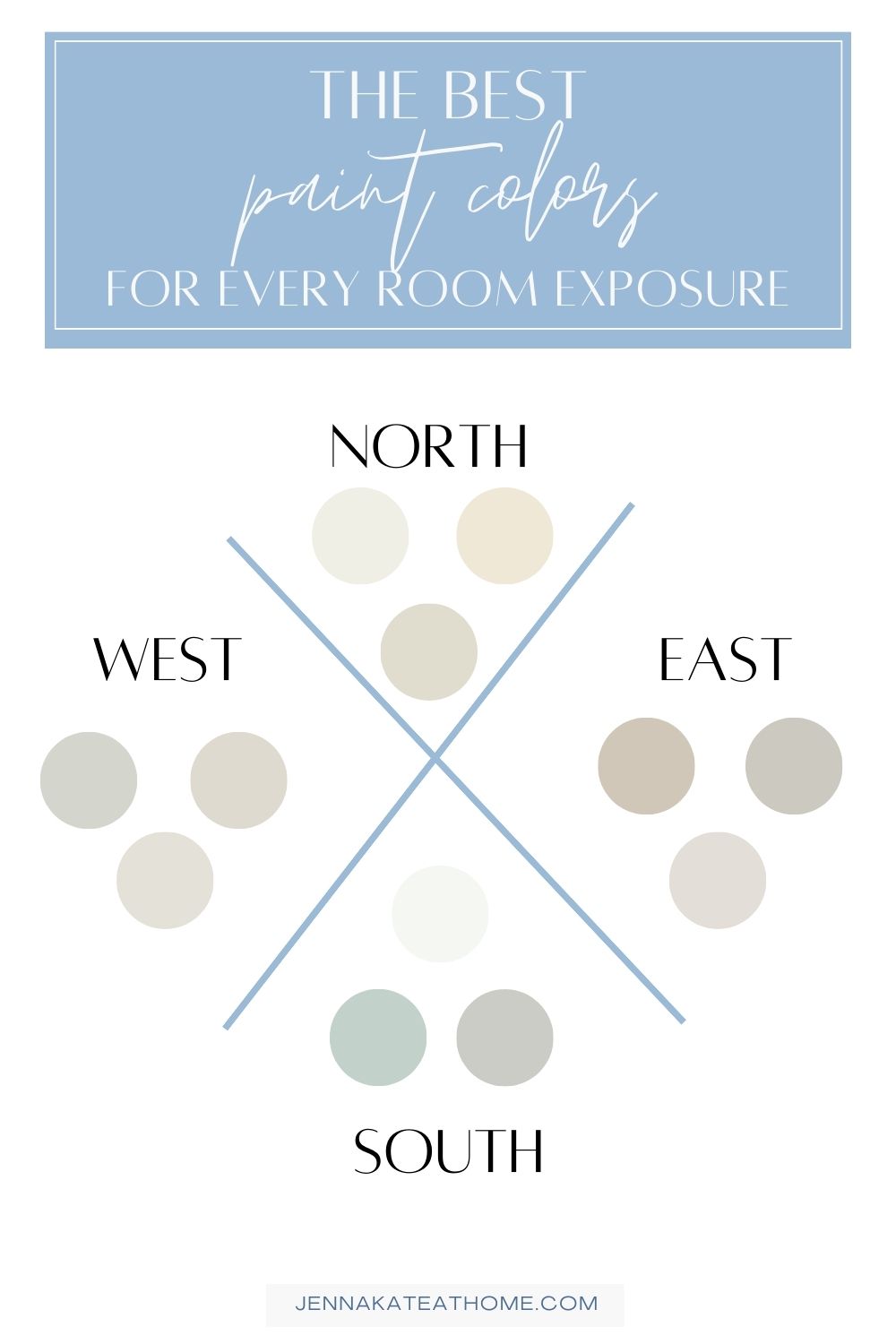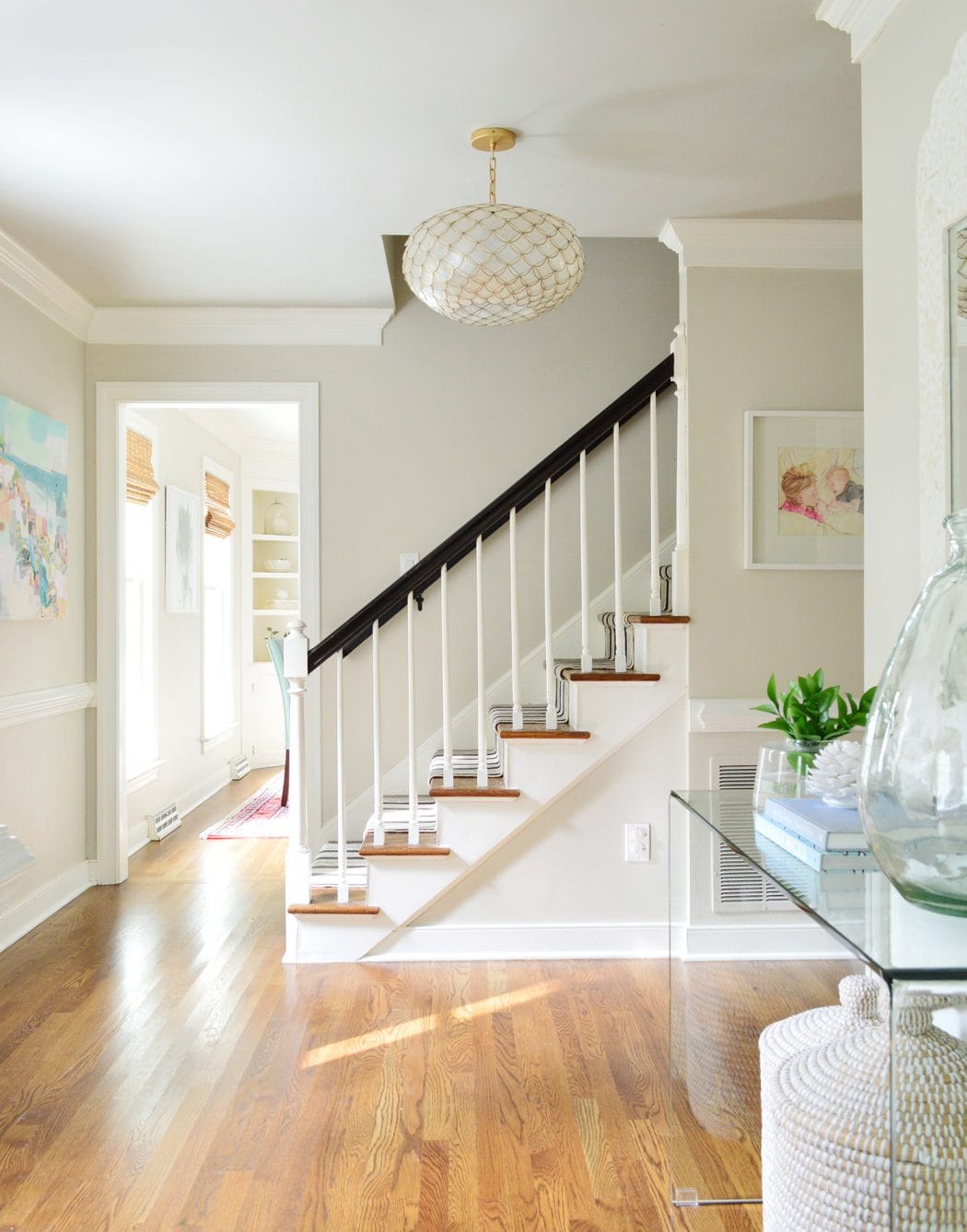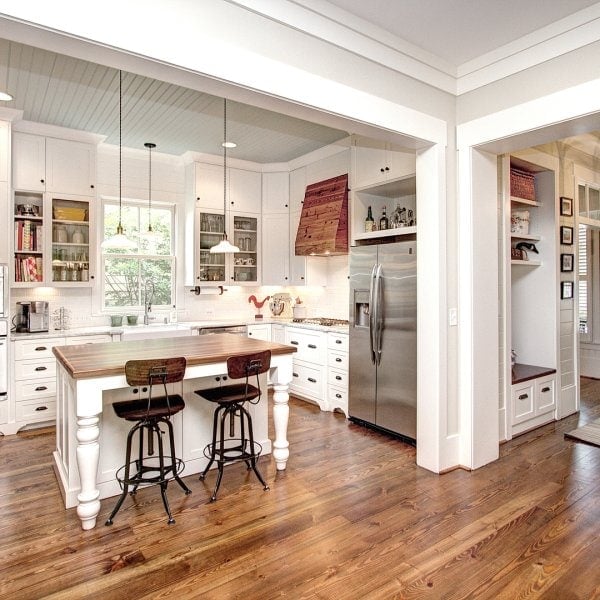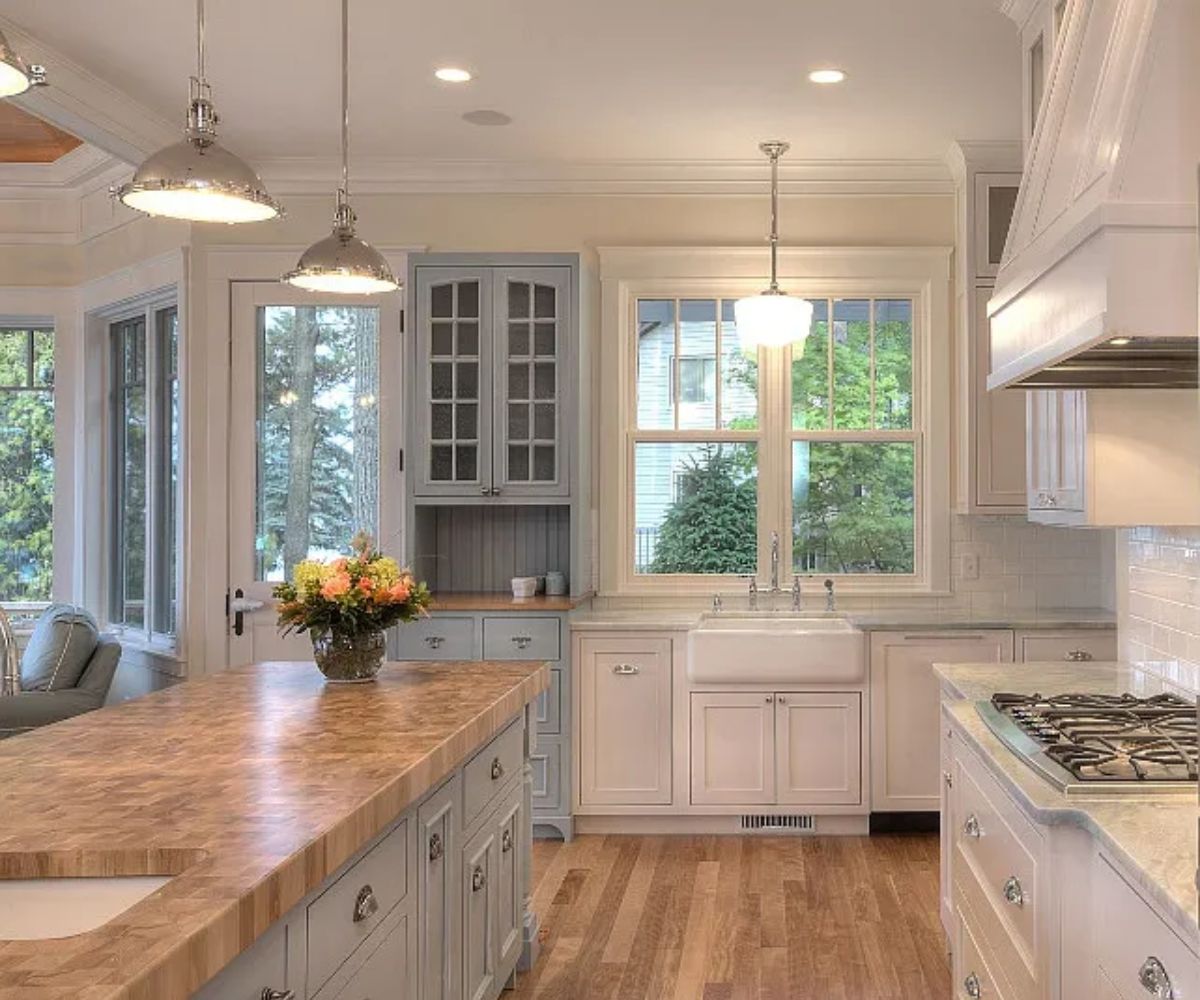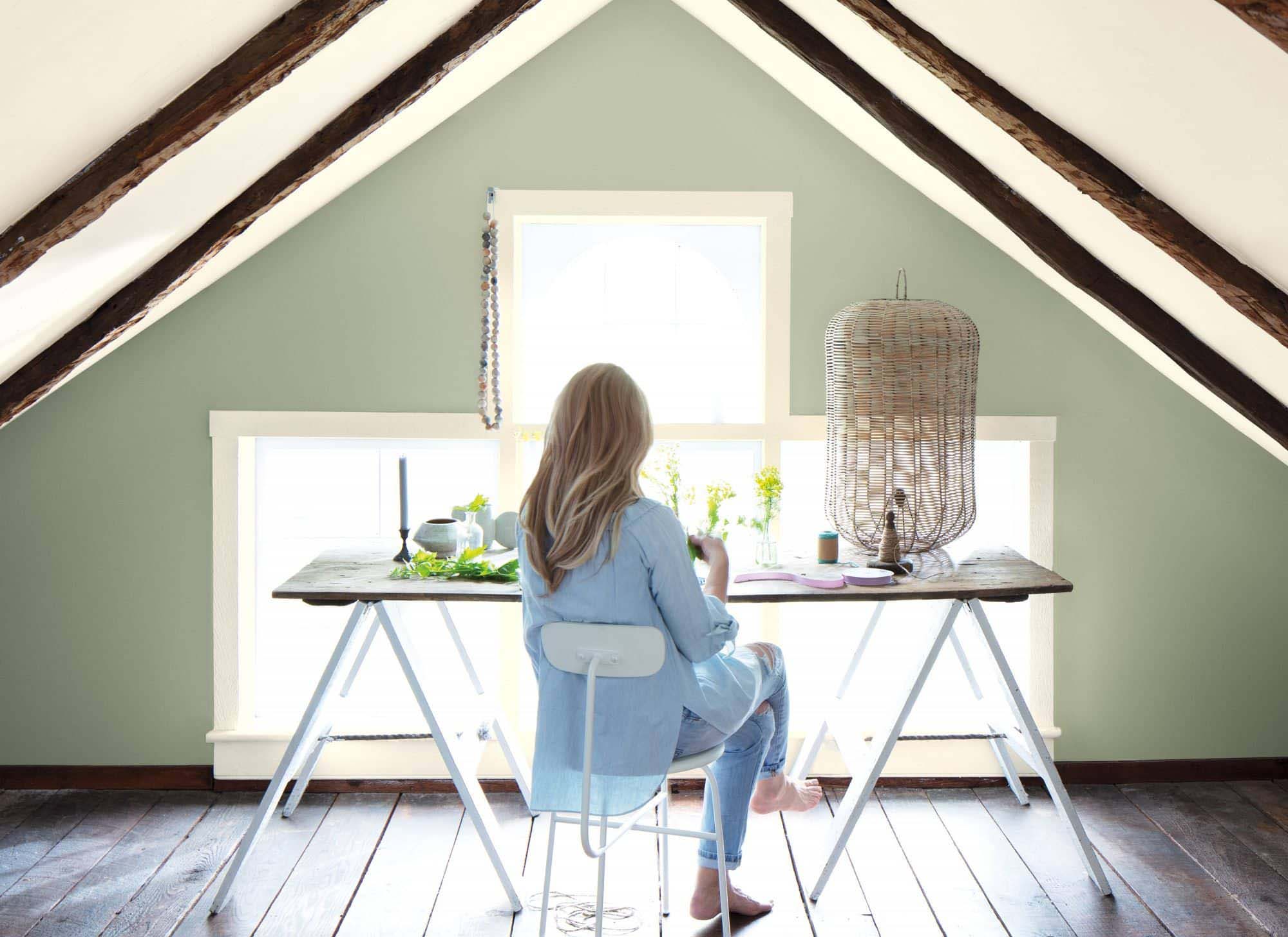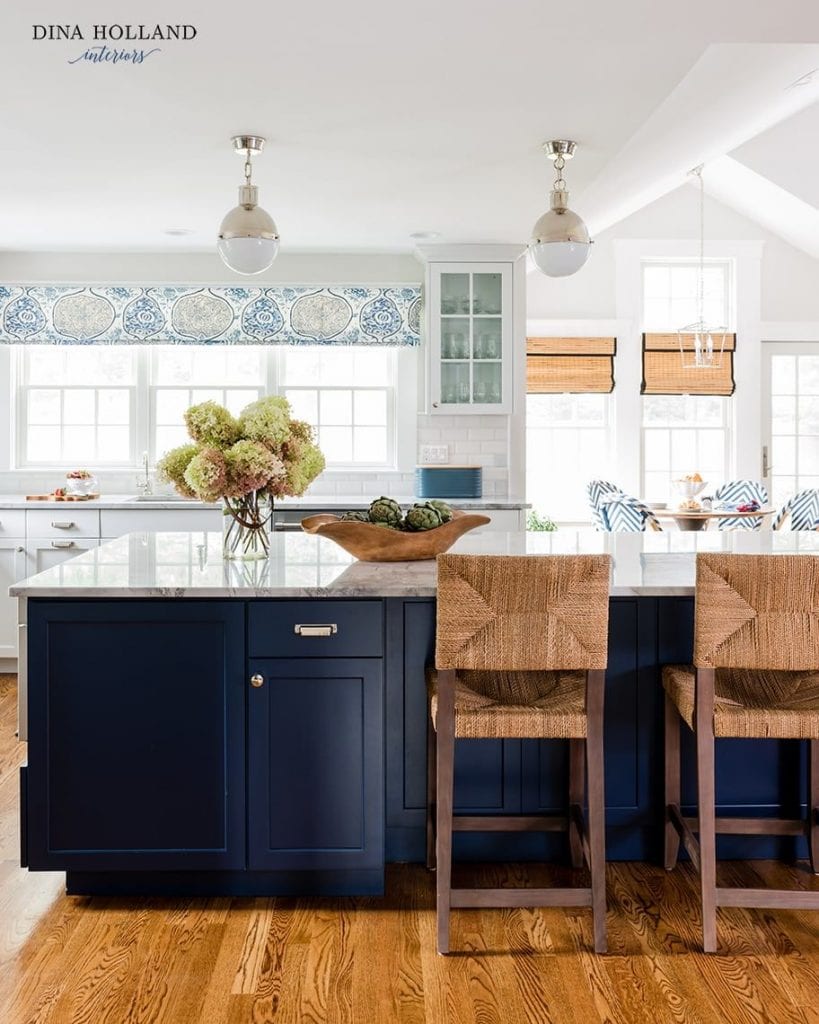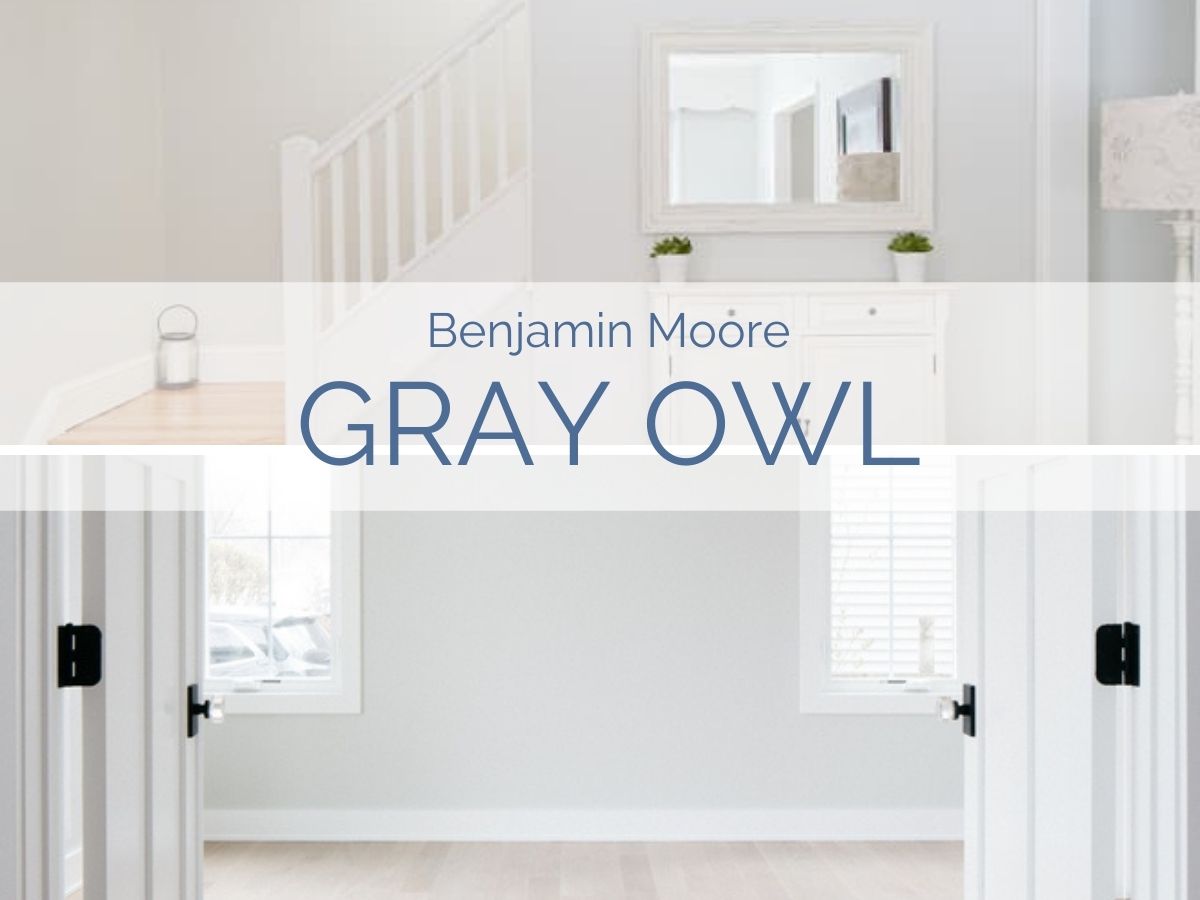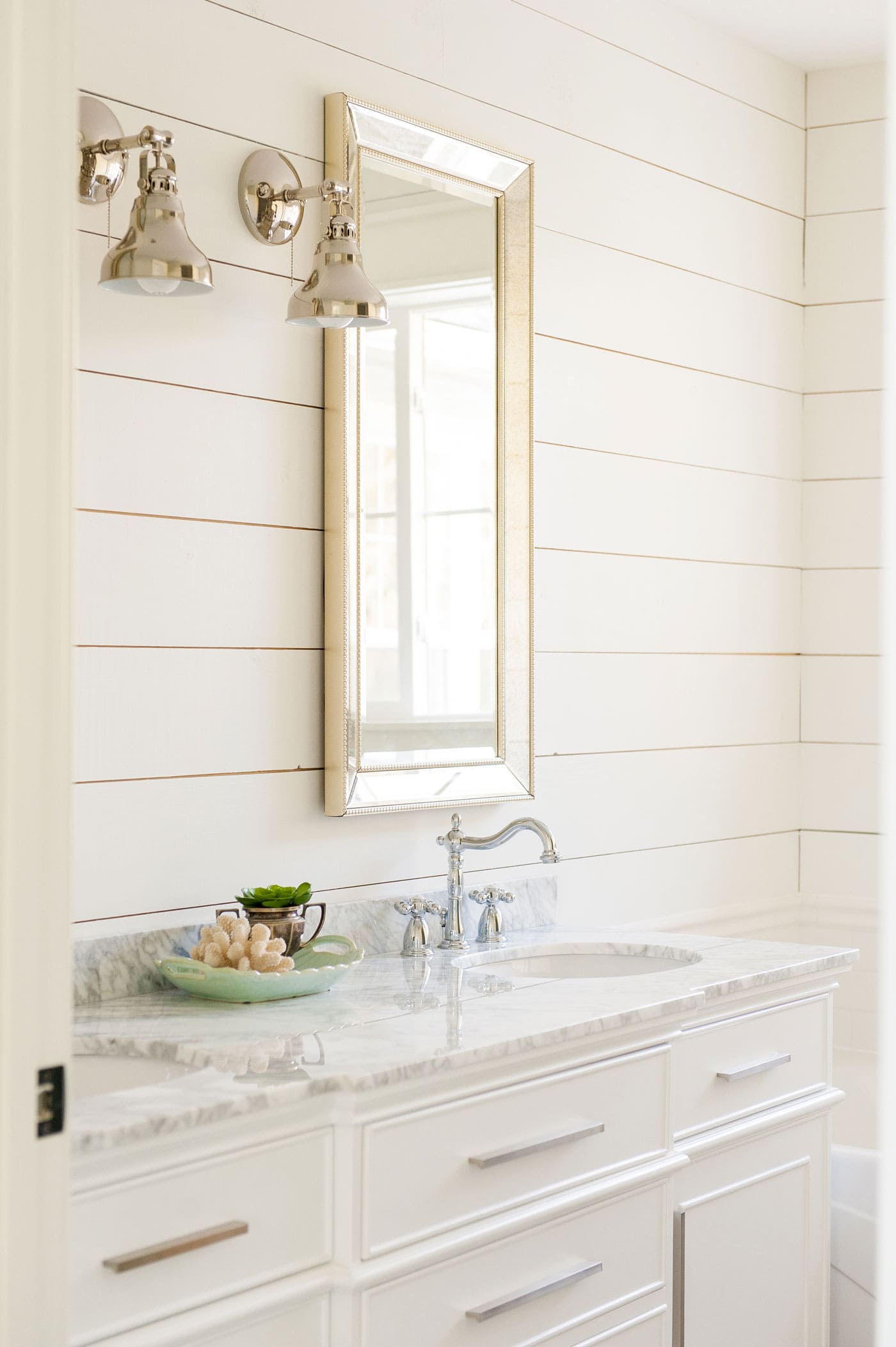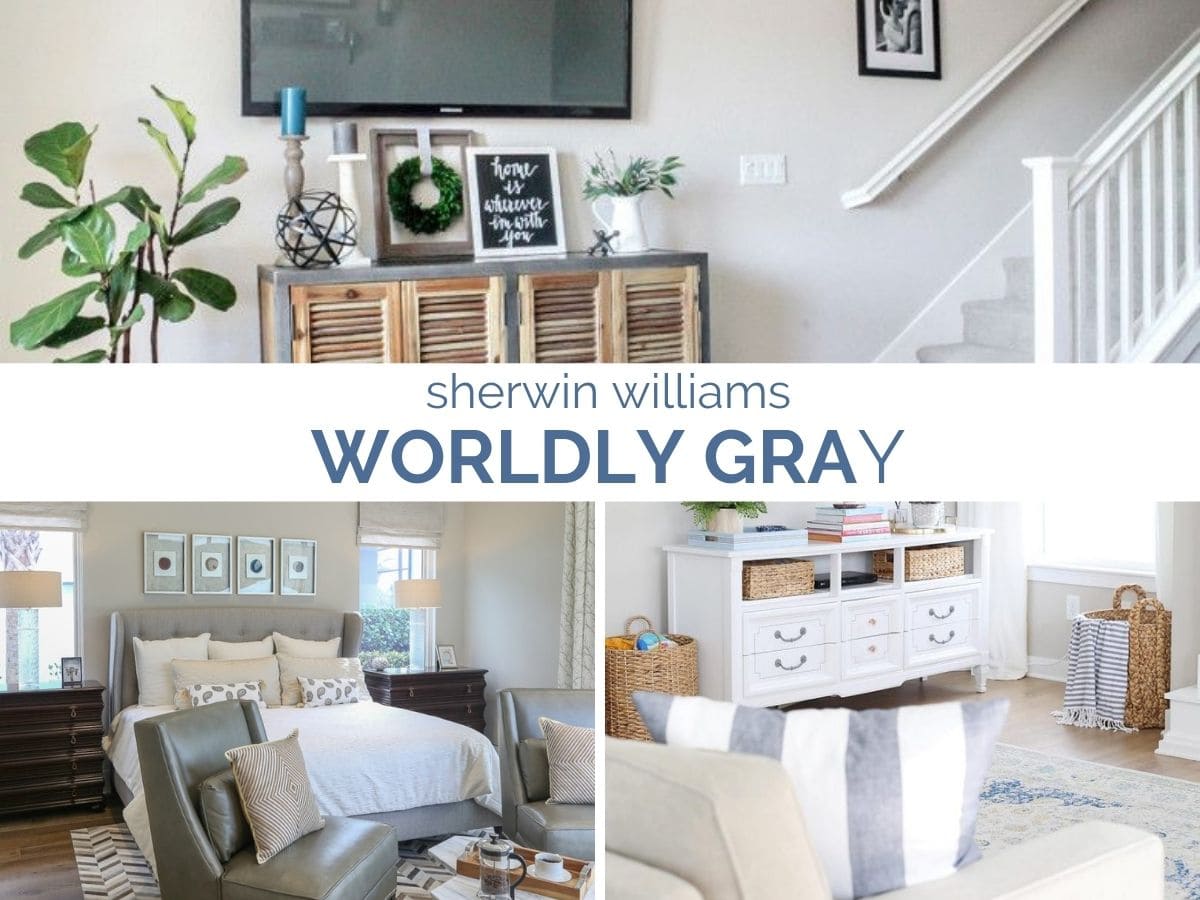Content may contain affiliate links. When you shop the links, I receive a small commission at no cost to you. Thank you for supporting my small business.
In this article, we will explore the best paint colors for north, south, east, and west-facing rooms. We will provide tips on how to choose the right color for your space and showcase some beautiful examples of rooms painted in these colors.
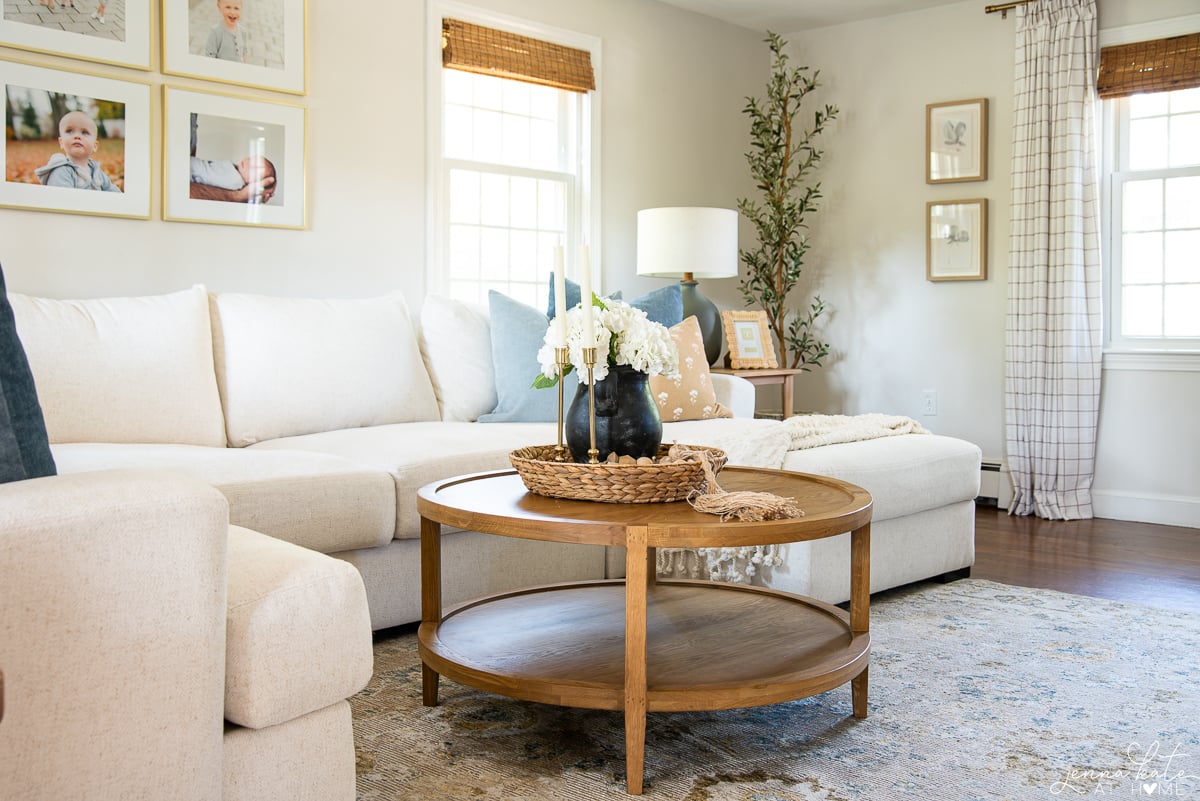
Are you planning on painting a room in your home but not sure which color to choose? Did you know that the direction a room faces can affect how a paint color looks?
North-facing rooms tend to have cooler light, while south-facing rooms have warmer light. East-facing rooms get bright morning light but can look washed out in the afternoon, while west-facing rooms get warm afternoon light.
Choosing the best paint color for a room can be daunting, but taking into account the direction the room faces can make the decision easier. There are certain colors that work better in north-facing rooms, while others work better in south-facing rooms.The same goes for east and west-facing rooms.
By choosing a color that complements the direction the room faces, you can create a space that feels balanced and harmonious.
Understanding Room Exposure
The direction a room faces can have a significant impact on the way it feels and looks. Understanding the exposure of your room can help you choose the best paint color that will complement the natural light and create the right ambiance.
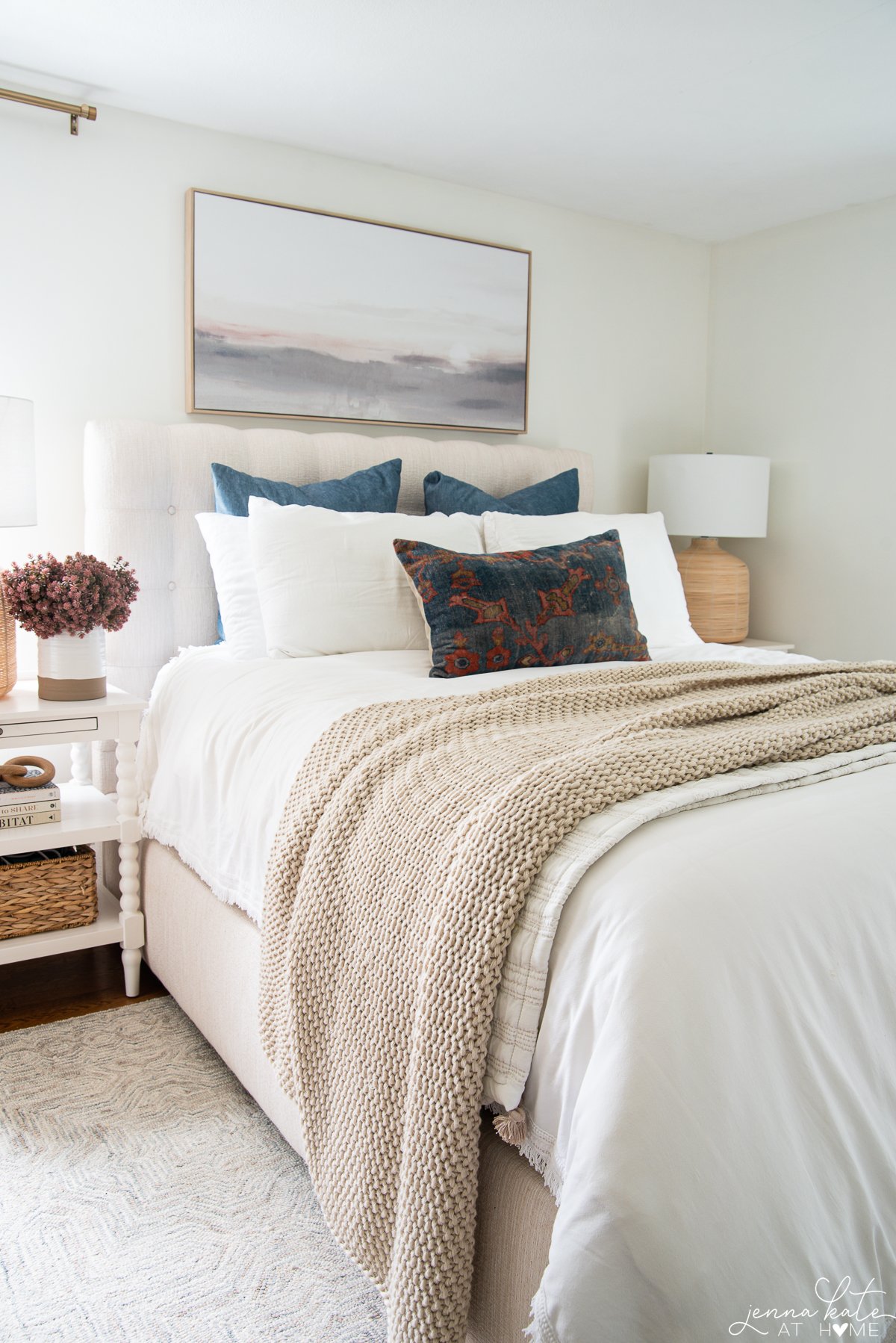
Here are some things to consider when choosing the best paint color for your room based on its exposure:
North-Facing Rooms
North-facing rooms tend to receive the least amount of natural light and can feel chilly and dark. To make the room feel brighter and cozier, consider using warm colors such as beige, warm gray, or light yellow. These colors will help reflect the limited natural light and create a welcoming atmosphere.
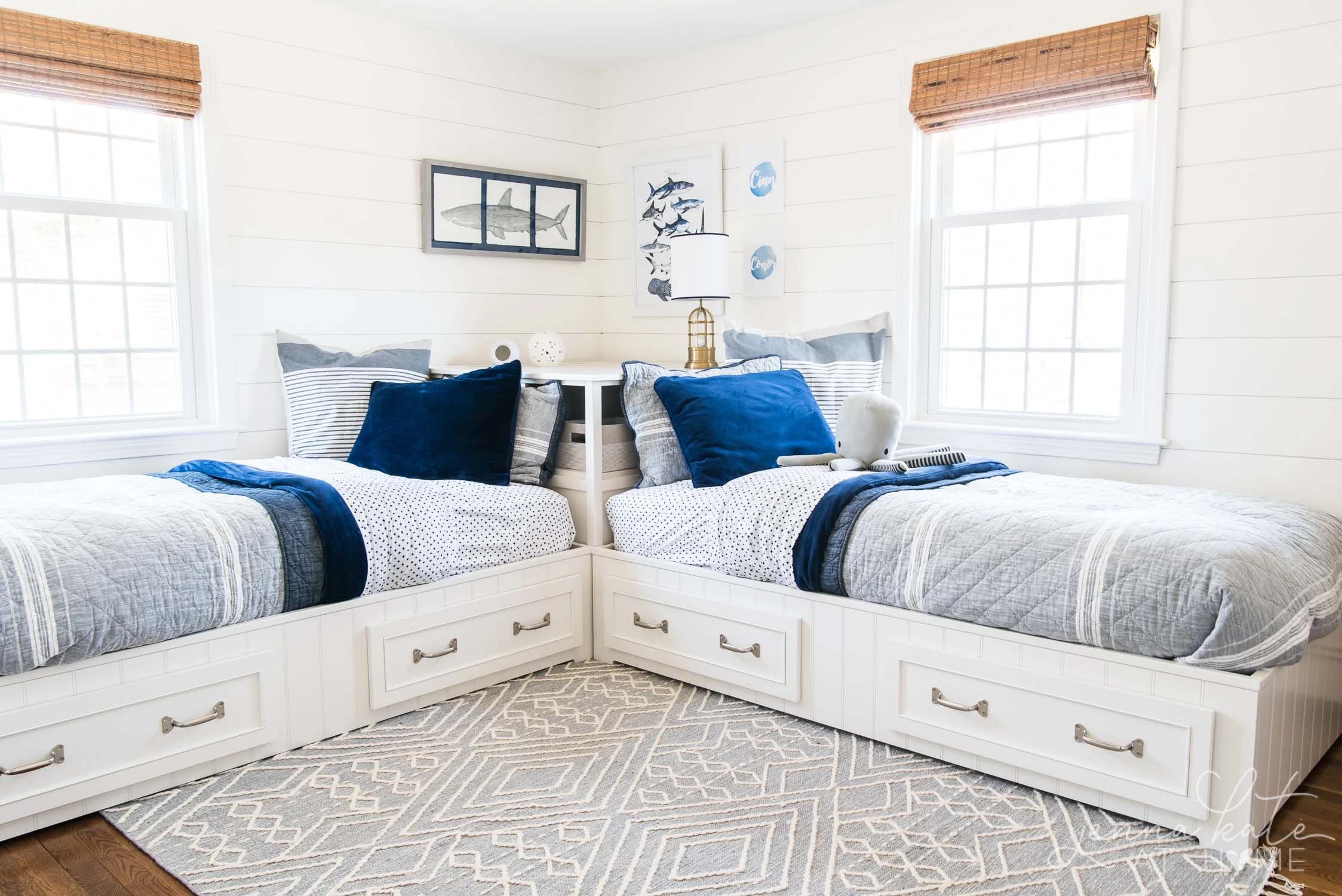
Avoid using cool colors such as blue, green, or purple as they can make the room feel even colder and darker. If you prefer a cool color, consider using a warm-toned version of it. For example, a warm gray instead of a cool gray.
South-Facing Rooms
South-facing rooms receive the most natural light, making them feel bright and warm.
However, too much light can make the room feel overly bright and uncomfortable. To balance the natural light, consider using cool colors such as light blue, pale green, or lavender.
These colors will help create a relaxing atmosphere and prevent the room from feeling too bright or washed out.
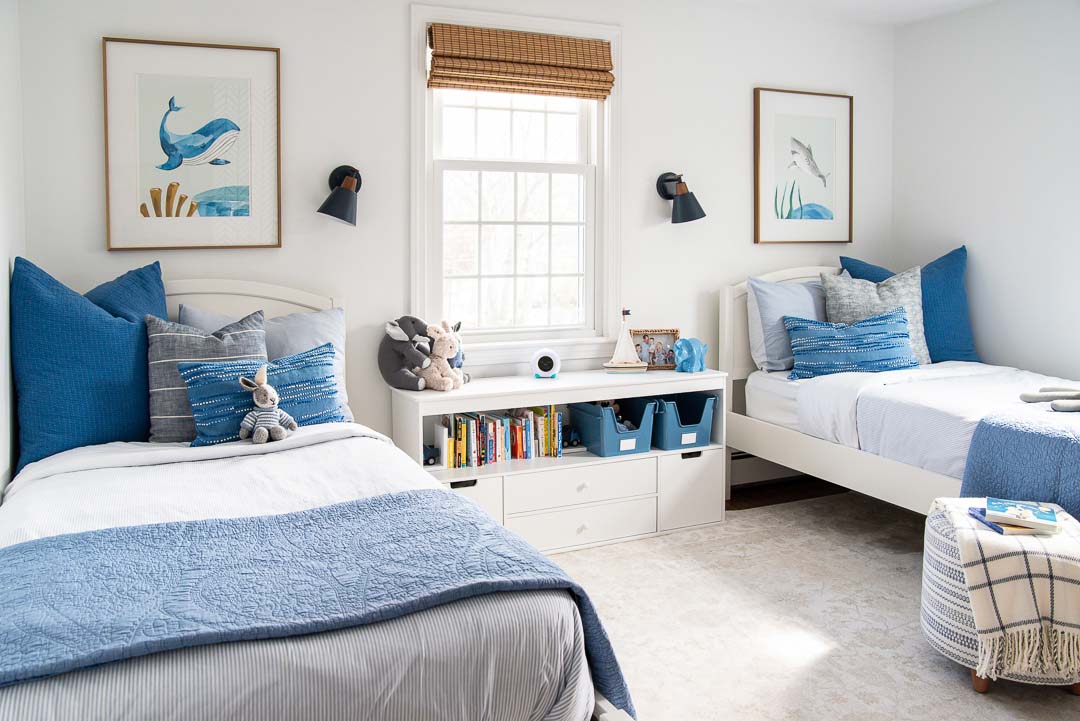
For trim and ceilings in your south-facing rooms, consider using crisp and clean white paint colors such as Chantilly Lace OC-65. This color will work well with all the other colors in the room and provide a great counterbalance for southern exposure.
East-Facing Rooms
East-facing rooms receive the most natural light in the morning, making them feel bright and cheerful.However, as the day progresses, the light can become cooler and bluish.
To balance the natural light, consider using warm colors or light colors with warm undertones such as yellow, pink or beige. These colors will help create a cozy and inviting atmosphere.
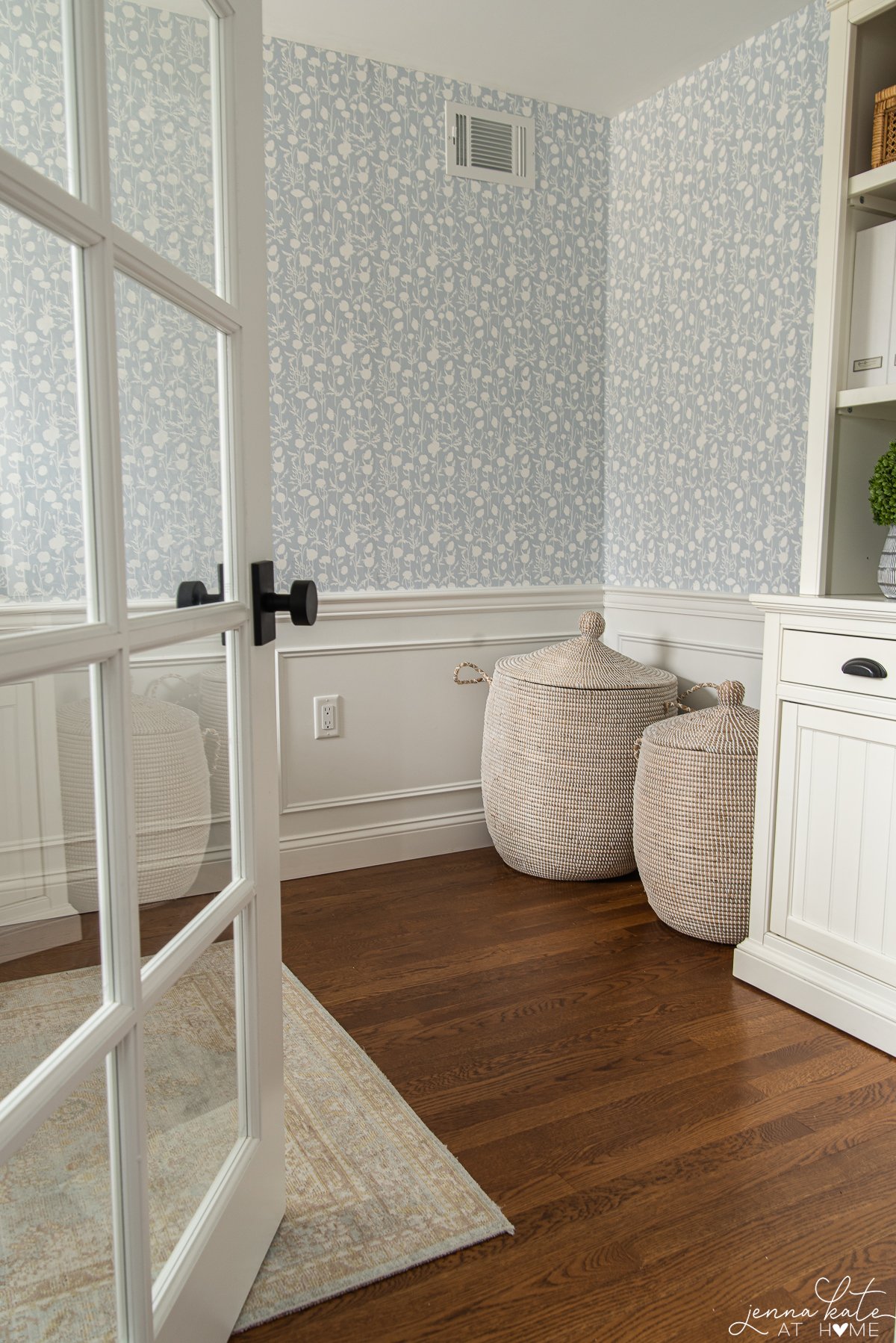
Avoid using cool colors such as blue or green as they can make the room feel too cold and unwelcoming. If you prefer a cool color, consider using a warm-toned version of it. For example, a warm blue instead of a cool blue.
West-Facing Rooms
West-facing rooms receive the most natural light in the afternoon, making them feel warm and cozy. However, the light can be intense and yellowish, which can make the room feel too warm. In the morning hours, the room can have a gray cast and feel cold.
To balance the natural light, consider use whites with a slightly warm undertone, grays with some warmth or blues with some green.
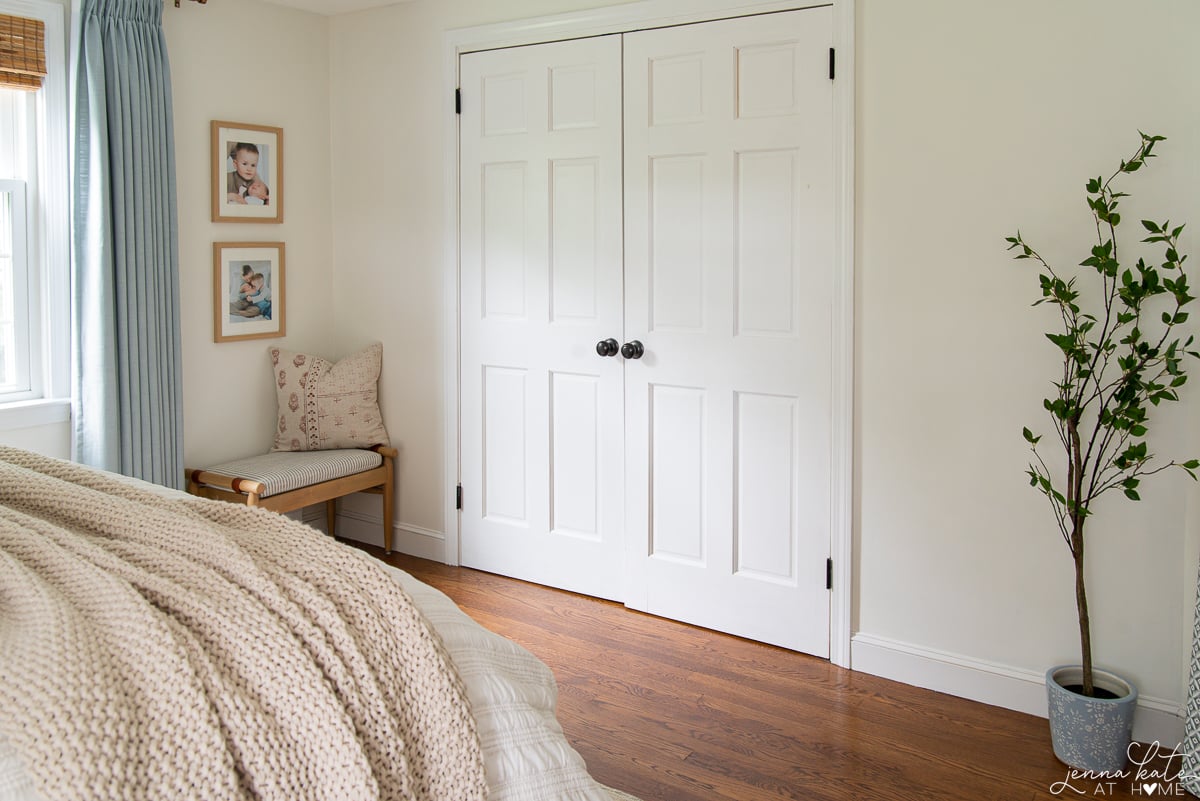
By understanding the exposure of your room, you can choose the best paint color that will complement the natural light and create the right ambiance.
Don’t Forget…
Don’t forget – no matter what you’ve read or photos you’ve seen online, it’s really important to sample paint colors in your home before committing!
Samplize provides real paint samples that are easy to move around your home, and cheaper than buying a gazillion paint pots! It’s the only way I buy paint samples.
The Impact of Light on Paint Colors
When choosing paint colors for your home, it’s important to consider the impact of light on how the colors will look in your space. Light can change the appearance of paint colors throughout the day, and even throughout the year.
Natural Light
Natural light is the light that comes from the sun. The amount and quality of natural light in your home can vary depending on the time of day, season, and the direction your windows face.
North-facing rooms tend to receive cooler, bluer light, while south-facing rooms receive warmer, yellower light. East-facing rooms receive bright, white light in the morning, while west-facing rooms receive warm, golden light in the late afternoon.
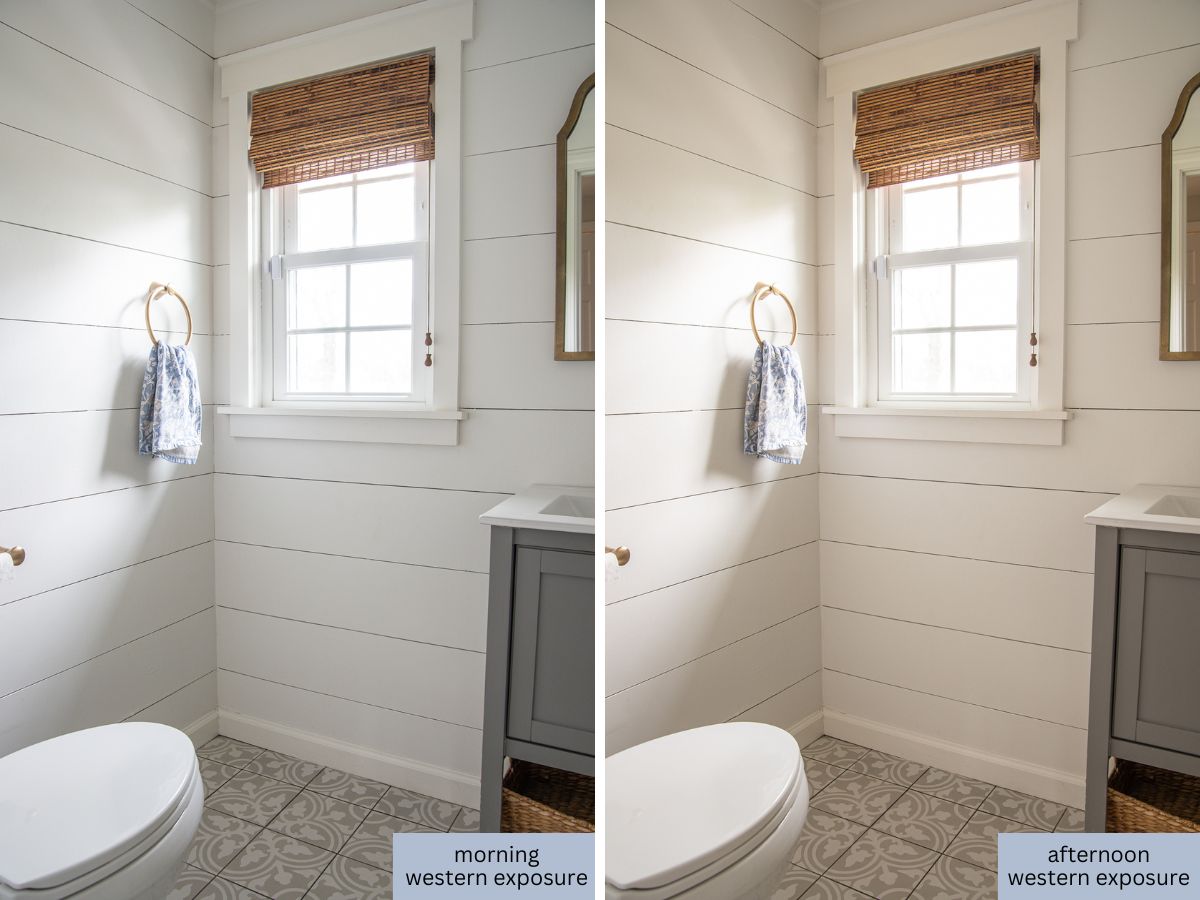
When choosing paint colors for a room with lots of natural light, it’s important to consider how the light will affect the color.
A color that looks bright and vibrant in the morning might look dull and muted in the afternoon. To get a better sense of how a color will look in your space, it’s a good idea to test it out in different lighting conditions throughout the day.
Artificial Lighting
Artificial lighting can also have a big impact on how paint colors look in your home. Different types of light bulbs emit different colors of light, which can affect the appearance of paint colors.
For example, halogen and incandescent bulbs emit warm, yellow light, while fluorescent and LED bulbs emit cooler, bluer light.
When choosing paint colors for a room with artificial lighting, it’s important to consider the type of light bulb you’ll be using.
A color that looks great under warm, yellow light might look completely different under cooler, bluer light.
To get a better sense of how a color will look under your specific lighting conditions, it’s a good idea to test it out with different types of light bulbs.
Choosing the Right Paint Color
Choosing the right paint color for your room can be a daunting task, but with a little bit of knowledge and preparation, you can achieve the perfect look. Here are some tips to help you choose the right paint color for your North, South, East or West-facing room.
Understanding Undertones
Before you start choosing a paint color, it’s important to understand undertones. Undertones are the subtle hints of color that are present in every paint color. They can be warm, cool, or neutral.
Warm undertones have a yellow, orange, or red base, while cool undertones have a blue, green, or purple base. Neutral undertones have a gray or beige base.
When choosing a paint color, it’s important to consider the undertones of the color and how they will interact with the other colors in the room.
If you have warm-colored furniture, you may want to choose a paint color with warm undertones to create a cohesive look. If you have cool-colored furniture, you may want to choose a paint color with cool undertones.
Balancing Colors
When choosing a paint color, it’s important to balance the colors in the room. If you have a lot of bold colors in the room, you may want to choose a more neutral paint color to balance the space.
If you have a lot of neutral colors in the room, you may want to choose a bolder paint color to add some interest.

Consider using a color wheel to help you choose a paint color that will complement the other colors in the room. Colors that are opposite each other on the color wheel, such as blue and orange, are complementary colors and can create a striking look when used together.
Best Paint Colors for Each Room Exposure
When it comes to choosing the best paint colors for your home, the orientation of your room is an important factor to consider.
The direction your room faces can affect the amount and quality of natural light it receives, which can influence the way colors appear on your walls. Here are some of the best paint colors for each room exposure:
North-Facing Room Colors
North-facing rooms tend to receive cool, blue-toned light that can make them feel chilly and dark. However, the color is consistent due to the lack of shadows and direct sun.
To counteract this, consider using warmer colors that have yellow or red undertones. Some great options include:
- White paint colors like Benjamin Moore’s White Dove (OC-17) or Benjamin Moore Navajo White (OC-95). Do not use cooler shades of white as they will look gray and dingy.
- Warm gray paint colors like Classic Gray (HC-170), Balboa Mist (OC-27) or Wind’s Breath (OC-24).
South-Facing Room Colors
South-facing rooms receive warm, natural sunlight throughout the day, making them ideal for cooler, more refreshing colors. Blues and greens in south-facing rooms help to balance out the warm, natural light.
Some of the best options for south-facing rooms include:
- White paint colors like Benjamin Moore’s Chantilly Lace (OC-65) or Simply White (OC-117)
- Gray paint colors like Stonington Gray (HC-170) or Gray Owl (OC-52)
- Cool color tones like Benjamin Moore’s Palladian Blue (HC-144) or Teal (2053-20)
- Off-white colors with cooler tones.
East-Facing Room Colors
East-facing rooms receive soft warm, yellow-toned light in the morning and cooler, blue-toned light in the afternoon.
However, they do not get the same level of warmth as a western-facing room and can feel cold afternoon noon.
This can make choosing the right paint color a bit tricky, but some great options for east-facing rooms include:
- Gray paint colors with green undertones like Benjamin Moore’s Gray Wisp (1570), Revere Pewter (HC-172) or Sherwin Williams Repose Gray
- Pink and purple undertoned shades of gray like Benjamin Moore Collingwood (OC-28), Sherwin Williams Light French Gray (SW-0055) or Sherwin Williams Incredible White (SW-7028)
- Warm neutrals like Sherwin Williams Accessible Beige (SW-7036)
- Warm white paint colors like White Dove (OC-17) or Simply White (OC-117)
West-Facing Room Colors
West-facing rooms receive warm, natural sunlight in the afternoon and evening, which can make them feel warm and cozy. Some great paint colors for west-facing rooms include:
- White paint colors like Benjamin Moore’s Chantilly Lace (OC-65) or Navajo White (OC-117)
- Slightly blue-green paint colors like SW Silver Strand (SW-7057) or Gray Owl (OC-52)
- Warm colors like Benjamin Moore’s Pale Oak (OC-20) or Classic Gray (OC-23)
- Neutral paint colors with warm undertones
Don’t Forget…
Don’t forget – no matter what you’ve read or photos you’ve seen online, it’s really important to sample paint colors in your home before committing!
Samplize provides real paint samples that are easy to move around your home, and cheaper than buying a gazillion paint pots! It’s the only way I buy paint samples.
Final Thoughts
Choosing the best paint colors for your North, South, East, and West facing rooms can be a daunting task. But with the right knowledge, you can make the right choice and create a beautiful space that you’ll love.
Remember, the direction your room faces can affect the way the light enters the room and how colors appear.
North-facing rooms tend to have cool, blue light, while South-facing rooms have warm, yellow light.East-facing rooms have bright, cool light in the morning and softer, warmer light in the afternoon. West-facing rooms have warm, golden light in the afternoon and cooler light in the morning.
In an East-facing room, you can use cool, soft colors like blue or green to create a calming and peaceful atmosphere. For a West-facing room, you can use warm, muted colors like gray or taupe to create a cozy and inviting space.
Remember to test your paint colors in the room before committing to a final decision. The way the light changes throughout the day can affect the way the color appears on the walls. By testing your paint colors, you can make sure you’re happy with the final result.

